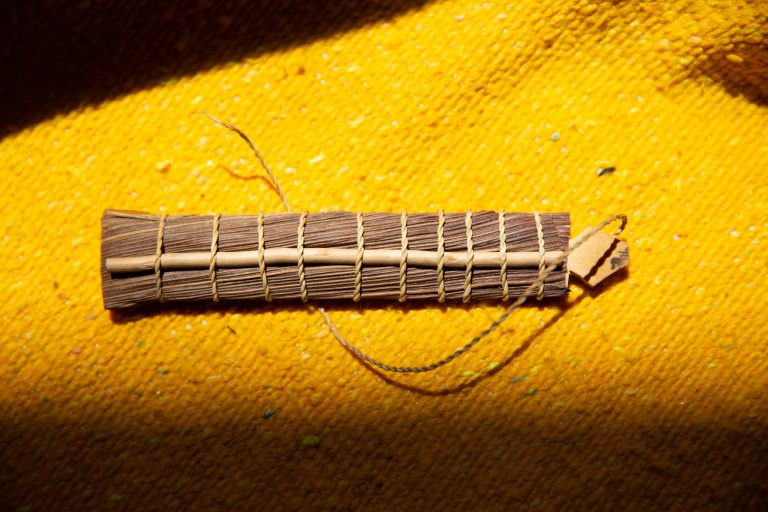Benefits
Traditional Uses of Kambô
Across the Amazon, the use of Kambô differs slightly from tribe to tribe, yet its main purposes revolve around lifting Panema—a term for heavy or negative energy that clouds the spirit—and hunting magic. Hunters believe Kambô sharpens their reflexes, increases speed and stamina, and even renders them “invisible” by temporarily masking the human scent that animals detect.
Elders also describe Panema as a state of depression, lethargy, or bad luck. By lifting it, Kambô is said to restore clarity, vitality, and alignment with one’s purpose. In this way, it is both practical and spiritual: ensuring a successful hunt, while also restoring balance to the mind and heart.
Medicinally, tribes administer Kambô for a wide range of conditions including malaria, snake bites, fevers, infections, fertility challenges, and general detoxification. It is regarded as a tonic that strengthens the mind and body, increases energy, and reduces pain.

Scientific Research
Outside of the forest, Kambô has been the subject of over two decades of scientific study. As with venoms from snakes and scorpions, researchers believe the peptides in Kambô may inspire new treatments for chronic illnesses including Chronic Fatigue Syndrome, Chronic Pain, Cancer, HIV, Parkinson’s Disease, Alzheimer’s, Depression, Hepatitis, Diabetes, Rheumatism, Arthritis, and addictions.
An Italian scientist, Vittorio Erspamer of the University of Rome was the first person to analyse Kambô in a laboratory. In 1986, he wrote that it contains a ‘fantastic chemical cocktail with potential medical applications, unequalled by any other amphibian’. The chemicals he referred to are peptides. The peptides studied by Erspamer have become essential to characterize the functional role of opioid receptors. He was twice nominated for a Nobel Prize and was also the person who first discovered Serotonin. Sixteen peptides have since been isolated from the secretion and several have been synthesised. Currently there are over 70 Kambô patents lodged, mainly in the USA.

Dermorphin-One of the peptides contained in Kambô
At the University of Paris, several years of research demonstrated that Dermaseptin B2 shows strong anticancer activity in vitro and in vivo (PLOS ONE, 2012; PLOS ONE, 2017). More recently, Queen’s University Belfast received a prestigious award for their groundbreaking work with frog-skin peptides and cancer research (ScienceDaily, 2011).
Benefits and Effects
Kambô is considered one of the strongest natural anti-inflammatory, antibiotic, antimicrobial, and anaesthetic substances known. It powerfully stimulates the immune system and cleanses the liver and intestines, making it both a physical and energetic purifier.
Immediate effects often include enhanced mood, focus, clarity, and energy, as well as greater resilience to stress, fatigue, hunger, and thirst. The mind becomes still, the body feels lighter, and daily challenges seem easier to manage.
Longer-term effects include a strengthened immune response, improvement or resolution of existing health conditions, and reduced vulnerability to future illnesses.
Spiritually, Kambô is often described as a light that clears the path. It helps release emotional blockages, overcome obstacles, and dissolve negative patterns. Many experience an energetic “reset,” with realignment of the chakras and a renewed sense of purpose.

The Mystery of Kambô
Despite billions invested in attempting to replicate the secretion of the Phyllomedusa bicolor frog, no laboratory has yet managed to reproduce its full chemical complexity. The holistic synergy of peptides remains unique to its natural form.
Kambô continues to work on mind, body, energy, and spirit in ways science has only begun to glimpse. This is why many indigenous people simply call it “magic.”

References
- van Zoggel H. et al. Antitumor and Angiostatic Activities of the Antimicrobial Peptide Dermaseptin B2. PLOS ONE (2012). Read
- Dos Santos C. et al. Studies of the Antitumor Mechanism of Action of Dermaseptin-B2. PLOS ONE (2017). Read
- Queen’s University Belfast. Scientists unlock potential of frog skin to treat cancer. ScienceDaily (2011). Read
